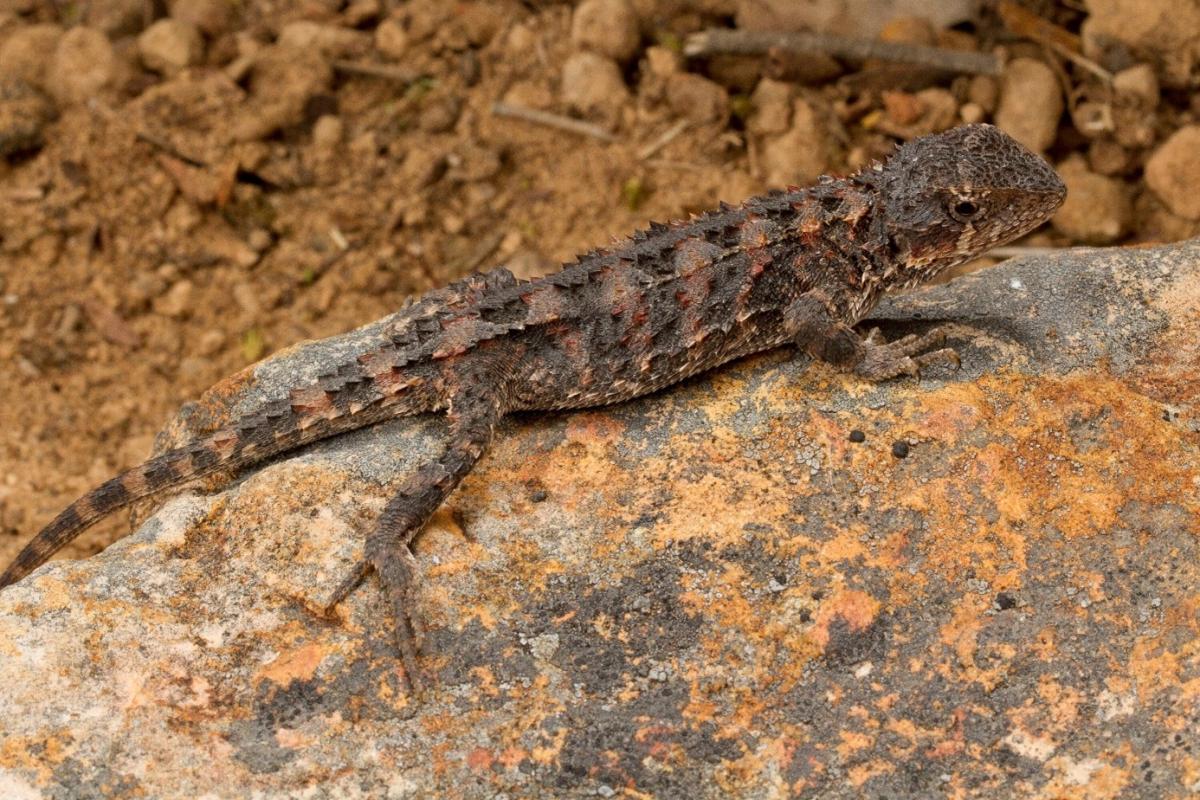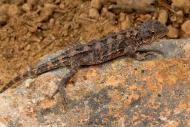Many reptiles around the world are seriously threatened by climate change, but unfortunately it is often difficult to predict their chances of survival. A new study published today in Current Biology by an international team of scientists, including researchers from the Museum für Naturkunde Berlin, shows how Quaternary climate change has affected populations of a threatened Australian lizard species (Rankinia diemensis) over the last 20,000 years.
The exemplary study combines fossil finds from natural history museums with genetic data from recent museum specimens to reveal how the species has responded to environmental changes in the past and what this means for its future in light of human-induced climate change.
Lead author Dr. Till Ramm, a scientist and former doctoral student at the Museum für Naturkunde Berlin and the Museums Victoria Research Institute in Melbourne, says the research shows that the species was probably displaced to higher altitudes by climate change.
“About 20,000 years ago, during the last ice age, the ‘mountain dragons’, as the species is also known, inhabited a much larger area in southeastern Australia, including regions such as Kangaroo Island and Naracoorte in South Australia,” says Dr. Ramm. “Today, these populations have disappeared. The remaining populations in Victoria, New South Wales, and Tasmania are small and genetically isolated, and if temperatures continue to rise, these lizards will eventually have nowhere left to retreat.”
Using state-of-the-art X-ray tomographic imaging techniques to identify tiny fossil fragments and combining this information with genomic data from recent museum specimens, the team was able to track long-term changes in the species' range and genetic diversity over thousands of years.
The results suggest that populations at lower elevations have already suffered a decline in genetic diversity, while cooler habitats at higher elevations are also threatened by global warming. This makes the Australian mountain dragon a clear warning sign for other reptiles inhabiting the same ecosystem.
Reptiles are particularly vulnerable to climate change because they cannot regulate their body temperature themselves. It is also alarming that a particularly large number of reptile species are classified as endangered in the region around the Southern Alps in Victoria, and that some species exhibit similar patterns. Black-and-yellow blue-tongued skinks (Tiliqua nigrolutea), Alpine oak skinks (Cyclodomorphus praealtus), and White's skinks (Liopholis whitii) also appear to have had larger, contiguous ranges at lower elevations in the past. This suggests that several reptile species in southeastern Australia could suffer the same fate.
The collections of natural history museums proved indispensable for these findings. Fossils, skeletons, and preserved specimens stored at the Museum für Naturkunde Berlin, Museums Victoria in Melbourne, and other institutions offer a unique resource for studying the effects of climate change on biodiversity and linking the past, present, and future of endangered species.
Co-author Prof. Johannes Müller from the Museum für Naturkunde Berlin says the study underscores the value of the new field of research known as Conservation Paleobiology and demonstrates the importance of fossil data for the development of conservation strategies.
“By learning from the past, we can make more accurate predictions and decisions for the future,” says Prof. Müller. “Our findings show how quickly climate change can affect biodiversity and why habitat protection is more important than ever today.”
Picture:
Mountain Dragon, Rankinia diemensis. Grampians National Park, Victoria. Photographer: David Paul, Source: Museums Victoria, Copyright Museums Victoria / CC BY (Licensed as Attribution 4.0 International)
Publication:
Ramm et al., Climate change predicts Quaternary extinctions and extant genetic diversity in a threatened Australian lizard, Current Biology (2025), doi.org/10.1016/j.cub.2025.09.067

